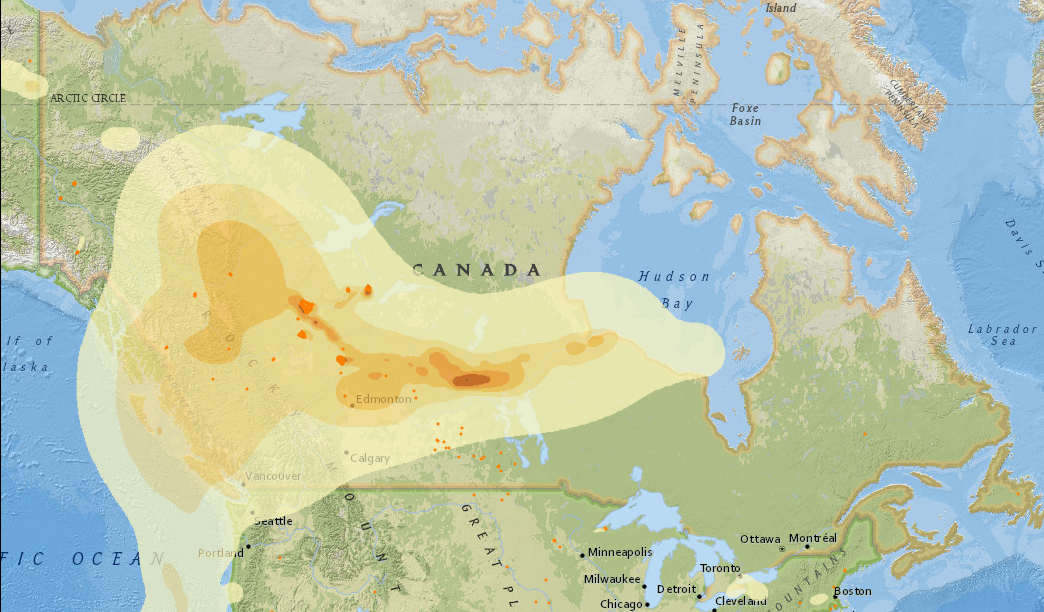Drifting smoke from out of control wildfires in Alberta has prompted Environment Canada to issue smoky skies bulletins for 10 regions of the B.C. northern interior.

About 5,000 people remain evacuated from their homes due to Alberta’s out-of-control High Level wildfire, one of several stubborn fires burning in the province’s north.
B.C. areas affected by the smoke include Prince George, the Cariboo and the Peace region. Fort Nelson, the Bulkley Valley and McGregor are also affected.
According to Environment Canada, the conditions are expected to persist for at least the next 24-48 hours.
Ministry of Environment and Climate Change Strategy air quality meteorologist Gail Roth said how long the smoke persists is highly dependent on wind direction.
“The signals are that wildfire is expected to be more common as we move into the future. I would say historically, though, we have seen some fires in the Peace up in the northern parts of B.C. or Alberta in May is not entirely uncommon.”

Get daily National news
READ MORE: Here comes the smoke: Health officials tell B.C. to prepare for new ‘5th season’
WATCH: (Aired March 6, 2019) Forest fires cause poor air quality in Prince George

Conditions remain far from the intense wildfire smoke that virtually turned day to night in Prince George last year.
According to B.C.’s Air Quality Health Index (AQHI), of the affected regions with monitoring stations, only Prince George is showing a rating of five, or “moderate” risk.
Fort St. John, Quesnel and Williams Lake showed a rating of three, at the high end of “low” risk on Monday.
That’s compared to areas around Fort McMurray and Fort McKay in Alberta where the AQHI reached 10 and above, or “very high risk.”
WATCH: New online tool tracks wildfire smoke

Regardless, Environment Canada is warning people with pre-existing conditions, the elderly, infants, children and people sensitive to smoke to take precautions due to the lower air quality.
Northern Health technical adviser Paula Tait said residents are being asked to limit their exposure to smoke by limiting vigorous outdoor activities, using indoor air filters or seeking out public places such as shopping malls or swimming pools with cleaner air.
“Keeping windows closed, doors closed, using indoor air cleaners, setting a furnace to recirculate,” she said.
“And then avoiding other sources of indoor air pollution like smoking, frying foods, using incense.”
Tait added that limiting exposure may be important, as the long-term effects of exposure to wildfire smoke are not well known, and the smoke has arrived far earlier this year than in previous seasons.
“We do know that other sources of particulate matter like burning wood and wood stoves during the winter, road dust in the spring, these all contribute to our long-term exposure to air pollution,” she said.
“Now with these longer wildfire seasons that’s definitely certainly a risk.”
Earlier this month, the BC Centre for Disease Control launched an information portal with tips on how to get through smoky air conditions.
The centre is also holding a workshop in Prince George on Tuesday to help residents prepare for the smoky season.
Northern Health has also set up a portal for information on air quality and wildfire smoke.
You can see an updated forecast on Canadian wildfire smoke here.





Comments